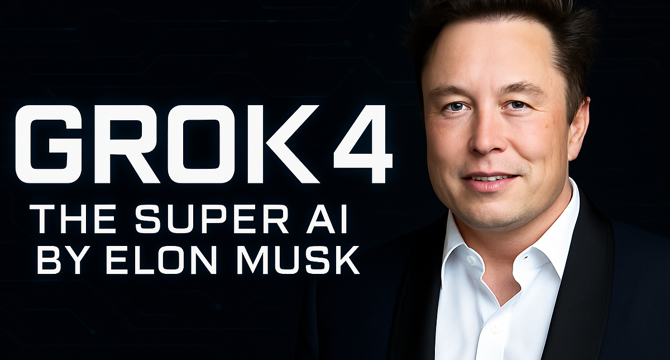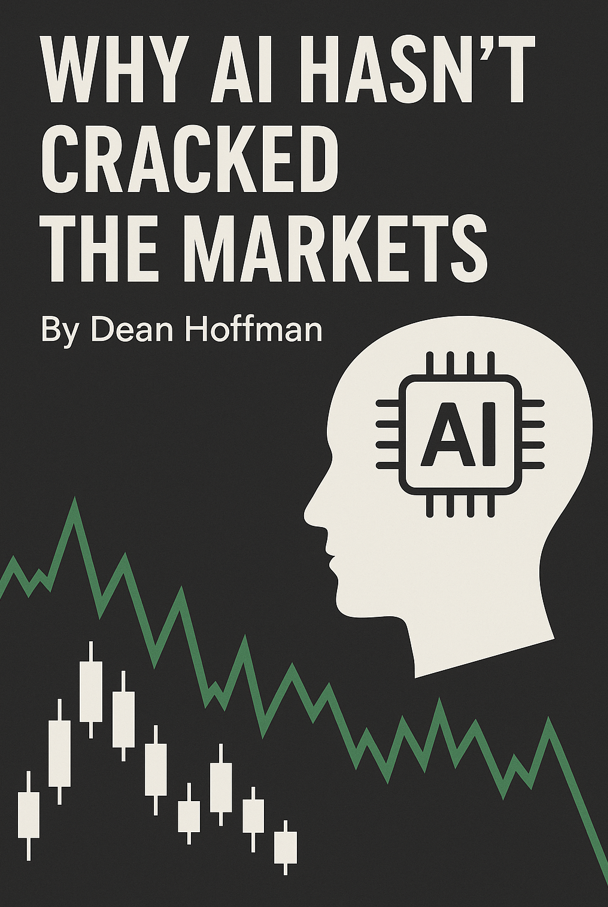ML News
Amazon
298

Image Credit: Amazon
Use K8sGPT and Amazon Bedrock for simplified Kubernetes cluster maintenance
- Managing complex Kubernetes clusters requires expertise in multiple domains like networking and security.
- K8sGPT and Amazon Bedrock offer advanced AI solutions for operational intelligence and troubleshooting.
- K8sGPT features include AI-powered troubleshooting, custom analyzers, and proactive issue identification.
- Amazon Bedrock complements K8sGPT with fully managed foundation models for seamless AWS integration.
- Best practices for running K8sGPT with Amazon Bedrock in two modes: CLI and Operator.
Read Full Article
17 Likes
Amazon
111

Image Credit: Amazon
How Rocket streamlines the home buying experience with Amazon Bedrock Agents
- Rocket Companies offers end-to-end home ownership journey services, simplifying complexities with tech solutions.
- Utilizing Rocket AI Agent, powered by Amazon Bedrock Agents, clients receive personalized guidance.
- AI agents enhance client engagement, boosting loan closures and operational efficiency significantly. Multi-agent collaboration is next.
Read Full Article
6 Likes
Amazon
255

Image Credit: Amazon
Build an MCP application with Mistral models on AWS
- Model Context Protocol (MCP) standardizes interaction of AI models with external systems.
- Mistral AI models on AWS simplify development of robust agentic AI systems.
- MCP integration with Mistral models enables seamless real-time application building on AWS.
- Building an intelligent AI assistant using Mistral models demonstrates efficient AI system creation.
- Strands Agent framework offers streamlined MCP application development with reduced complexity.
Read Full Article
15 Likes
Amazon
1k

Image Credit: Amazon
Build real-time conversational AI experiences using Amazon Nova Sonic and LiveKit
- Rapid growth in generative AI tech boosts business productivity and customer service experiences.
- Amazon Nova Sonic facilitates real-time conversational AI in Amazon Bedrock with low latency.
- Integration with LiveKit's WebRTC simplifies building conversational voice interfaces for developers.
Read Full Article
23 Likes
Medium
1.2k

Image Credit: Medium
Daily AI Habits to Boost Productivity Without Burnout
- AI can boost productivity by handling repetitive tasks, providing smart suggestions, and organizing schedules.
- Daily AI habits can lead to increased efficiency, better decision-making, and mental clarity.
- AI tools such as smart planners, transcription services, email assistants, and task organizers optimize workflow and time management.
- Incorporating AI tools in daily routines can save time, reduce decision fatigue, maintain work-life balance, and prevent burnout.
Read Full Article
29 Likes
Medium
348

Image Credit: Medium
Title: How I Made $5,000 in Just 2 Months with Pure Price Action Trading
- A trader shares how they made $5,000 in just 2 months through Price Action trading, focusing on market behavior, structure, and candlestick psychology.
- The success was achieved without relying on indicators but through a disciplined strategy emphasizing clear structure, clean market zones, and risk-to-reward ratio above 1:2, while avoiding emotional entries.
- Key lessons include trading with a plan, focusing on quality over quantity, adhering to rules, controlling emotions, and constant refinement through backtesting.
- The trader plans to continue building upon their success, growing further, and sharing knowledge to help others find success.
Read Full Article
20 Likes
Medium
344

Image Credit: Medium
Grok 4 Benchmarks explained
- Elon Musk released Grok 4, a powerful AI model, outperforming others in benchmarks.
- Grok 4 excels in various domains like science, law, medicine, and economics.
- The benchmarks include visual puzzles, graduate-level physics problems, coding tasks, and math challenges.
- The model showcases generalizing, reasoning, and adapting abilities, emphasizing intelligence and active tool use.
Read Full Article
20 Likes
Medium
384

Image Credit: Medium
Master the Future with Solamalai College’s B.E. Computer Science (AI & ML) Course
- Solamalai College of Engineering offers a B.E. in Computer Science and Engineering specializing in Artificial Intelligence and Machine Learning to prepare students for the digital revolution.
- AI and ML applications are transforming industries like healthcare, finance, agriculture, education, logistics, and manufacturing, providing the opportunity to impact lives globally.
- The curriculum integrates AI & ML into Computer Science and Engineering, covering core areas aligned with AICTE guidelines and industry standards, emphasizing practical application.
- Graduates can pursue diverse career paths in top companies like Google, Amazon, IBM, and startups, with opportunities for higher studies in AI/ML/Data Science, Business Analytics, or Artificial Intelligence.
Read Full Article
23 Likes
Medium
291

5 Basics you NEED to know about Artificial Intelligence(Simplified)
- Machine learning, a subset of AI, allows systems to learn and improve by processing data, with roots tracing back to the 1940s and 50s.
- Deep learning, relying on Artificial Neural Networks, mimics the human brain structure to analyze complex patterns, commonly used in facial recognition.
- Data serves as the fuel for AI systems, crucial for training models and their performance, emphasizing the importance of quality and quantity of data.
- In AI, feeding data is akin to fueling a car, initiating processing similar to engine ignition, resulting in the system producing content after analyzing patterns iteratively.
Read Full Article
17 Likes
Marktechpost
72

Google AI Open-Sourced MedGemma 27B and MedSigLIP for Scalable Multimodal Medical Reasoning
- Google DeepMind and Google Research have introduced two new models, MedGemma 27B Multimodal and MedSigLIP, under the MedGemma umbrella to advance open-source development in medical AI.
- MedGemma models address data heterogeneity and limited supervision in healthcare AI, processing medical images and clinical text for tasks like diagnosis and report generation.
- MedGemma 27B Multimodal offers enhanced vision-language architecture for medical reasoning, achieving high accuracy on tasks and excelling in agentic environments.
- MedSigLIP, a lightweight image-text encoder, supports edge deployment, excels in healthcare applications, and outperforms dedicated image-only models in various medical domains.
Read Full Article
4 Likes
Semiengineering
44

Image Credit: Semiengineering
The Data Dilemma In Semiconductor Testing And Why It Matters: Part 2
- ACS Data Feed Forward (DFF) is a cloud-enabled solution that simplifies and automates the transfer of device test data between test floors in semiconductor testing.
- DFF works alongside Advantest's Real-Time Data Infrastructure (RTDI) to create a seamless data pipeline, allowing engineering teams to focus on developing innovative test strategies.
- The process involves capturing data at the source test cell, filtering and preparing the data, securely transferring it via Advantest ACS Cloud, and delivering it to the destination test floor ready for immediate use.
- ACS DFF offers automated data transfer, pre-filtered data, timely delivery, and user-friendly interfaces, making it a game-changer in modern semiconductor manufacturing for running smarter tests and improving outcomes.
Read Full Article
2 Likes
Hackernoon
24

Image Credit: Hackernoon
Why No Single Algorithm Solves Deduplication — and What to Do Instead
- Detecting duplicate entities at scale is challenging due to quadratic complexity in comparisons.
- Modern de-duplication pipelines use blocking keys, hashing, and candidate generation to reduce comparisons.
- Different blocking strategies like standard blocking, multi-pass, canopy clustering, and LSH are discussed.
- Sparse vs. dense vector similarity filtering and hybrid approaches are crucial for efficient deduplication.
Read Full Article
1 Like
Medium
332

Image Credit: Medium
After 25 years building trading systems for hedge funds, I’ve learned to distinguish between…
- Article discusses the misconception that AI can accurately predict stock prices.
- Markets are adversarial and constantly evolve, unlike the relatively stable rules of language.
- AI can excel at recognizing patterns but struggles in finance due to changing market dynamics.
- Successful firms combine AI with human expertise for effective trading strategies.
Read Full Article
20 Likes
Medium
28
Image Credit: Medium
How AI Masters Games Like Chess and Go
- AI has evolved from just calculating faster to learning to think like a child through reinforcement learning (RL), which has applications beyond games, touching drug discovery, climate science, and art.
- RL, functioning on delayed and sparse feedback, requires agents to connect actions with outcomes over time, akin to a form of foresight, exemplified by AlphaGo's innovative strategies.
- AI like AlphaGo and AlphaZero harness neural networks to learn from human games, play against itself, and develop understanding without explicit human definitions, enabling creativity in music composition and chess strategies.
- Questions arise as AI surpasses human comprehension in tasks like chess and music composition, prompting inquiries into ownership of ideas and credit for creations beyond human capabilities.
Read Full Article
1 Like
Medium
373

Stastics basics explained
- Mean (Average) is calculated by adding all values and dividing by the total number of values. It can be distorted by outliers, as seen in the example provided.
- Median represents the middle value when data is sorted and is not affected by outliers.
- Mode is the most frequently occurring value in a dataset.
- Understanding when to use mean, median, or mode depends on the nature of the data: use mean for clean data, median for data with outliers, and mode for identifying the most frequent value.
Read Full Article
22 Likes
For uninterrupted reading, download the app